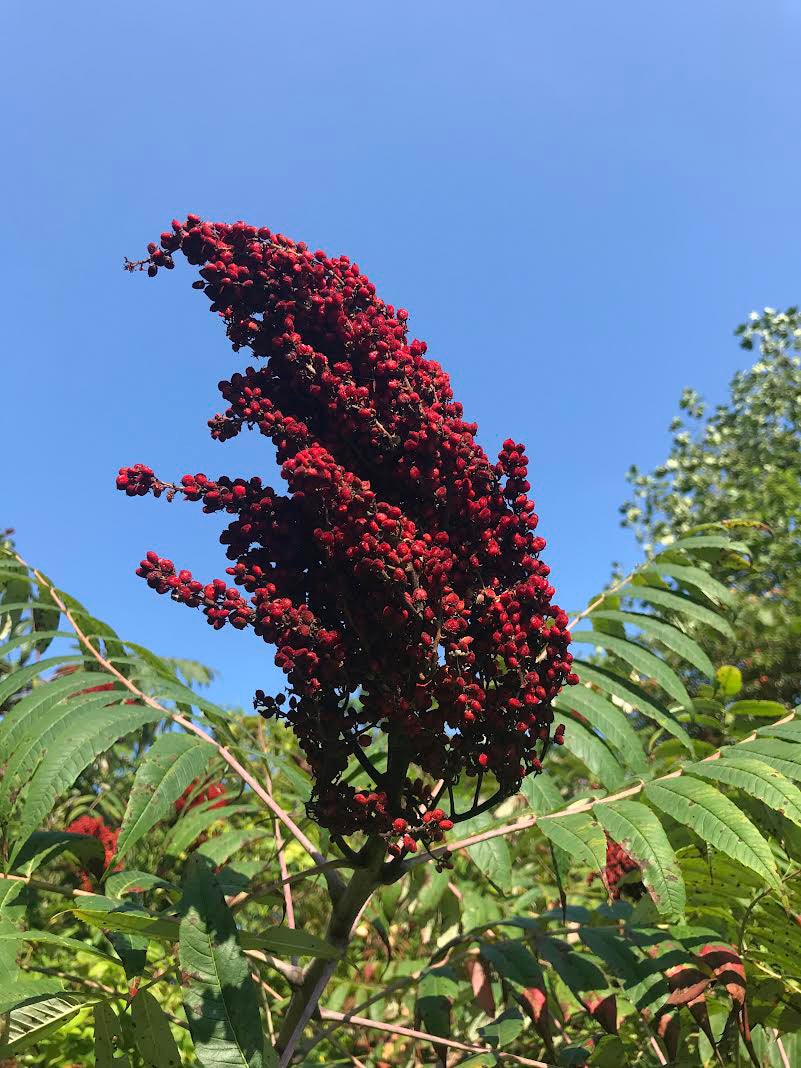Outside: Go native when planting yard trees
Published 4:46 pm Monday, April 10, 2023

- Sumac is a native tree that’s often considered a weed, but its colors make it worthy for landscaping. (Photo submitted)
|
Getting your Trinity Audio player ready...
|
By Steve Roark
Columnist
With spring comes the urge to work in the yard and plant things. The routine is to go to a garden center and buy plants alien to our area. Some of them can escape your yard through seed dispersal and grow where they are not wanted, negatively impacting local forest ecosystems. So if you get the itch to plant a tree, consider seeking out native ones to use in landscapes.
The biggest advantage of native plants is that they are already accustomed to the local climate and insect and disease problems. They are also very economical if you dig up small plants from local wooded areas or grown-up field (get permission before digging). Select only young specimens to transplant, because bigger plants must have big root balls dug up for good survival. Compare the site the plant is growing to your yard and make sure conditions are similar. A tree growing next to a stream will likely not do well on a dry ridge. A good number of native trees are available at nurseries and garden centers, and small seedlings can be purchased from mail order nurseries. So do some research before you go shopping. The following is a list of native plants that could be used for landscaping, which is by no means complete. To identify plants in the wild, refer to a good tree or plant identification guidebook.
Shortleaf pine: A good one for dry sites, and makes a tall, slim trunk with handsome, platy bark; Pines whisper in the wind and add color to a winter landscape.
Red and Sugar Maple: Both produce a handsome tree with a rounded, oval canopy. Red maple produces beautiful crimson leaves in the fall, while sugar produce brilliant gold ones.
Red Mulberry: A fast growing tree with interesting leaves of three different shapes. It produces berries that attract songbirds and pretty tasty for human consumption as well.
Yellow poplar: The state tree of Tennessee and Kentucky. It grows very tall, and so needs plenty of room. It has uniquely shaped leaves, beautiful tulip-like flowers in spring, bright yellow leaves in the fall. It needs deep, moist soil.
Serviceberry: A small to medium sized tree with lacey leaves. Its white flowers bloom early and produce berries in June that attract birds.
Sumac: Considered a weed by many, this one has an interesting look if planted in a small group. It produces bright red clumps of fruit in late summer, and bright red leaves early in the fall. It’s a very hardy plant.
American Holly: Our native holly can take cold weather much better than foreign cultivars. The leather-like leaves are evergreen, and it has a smooth gray bark. Holly is one of the few trees with separate male and female flowers (boy trees and girl trees). The females are the only ones that produce the bright red berries of course, so you need a male tree nearby for pollination.
Trumpet Vine (also called Trumpet Creeper): A common woody vine that can be grown on a fence or trellis. It produces orange trumpet-shaped flowers that attract hummingbirds.
Flowering Dogwood and Redbud: These native trees are some of the most planted trees there are, and there are a lot of cultivars, some native, some not.
Trees Not To Plant: Please do NOT plant Bradford Pear. They are not only prone to wind and snow damage, they are escaping and wreaking havoc on farms and native forests.
Steve Roark is a volunteer at Cumberland Gap National Historical Park.





